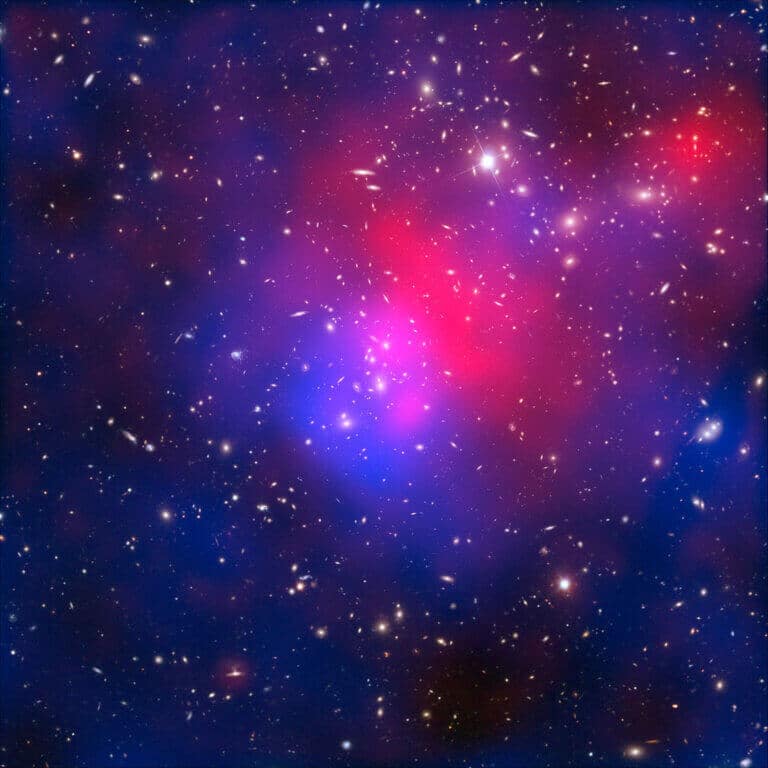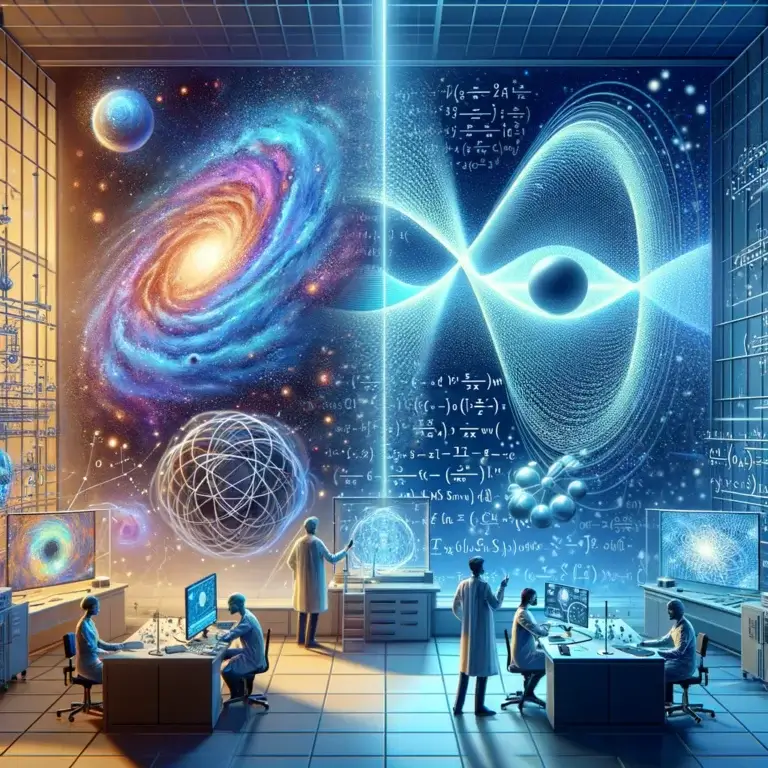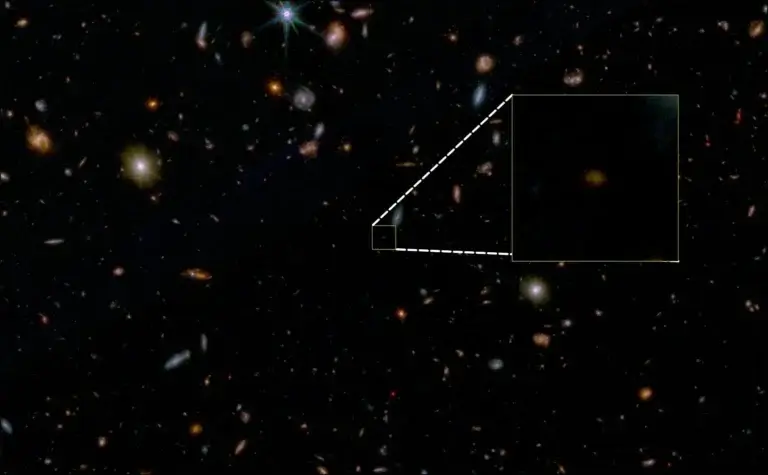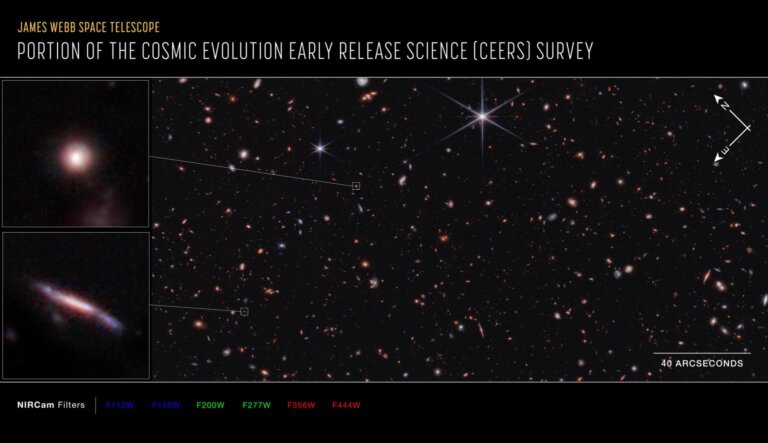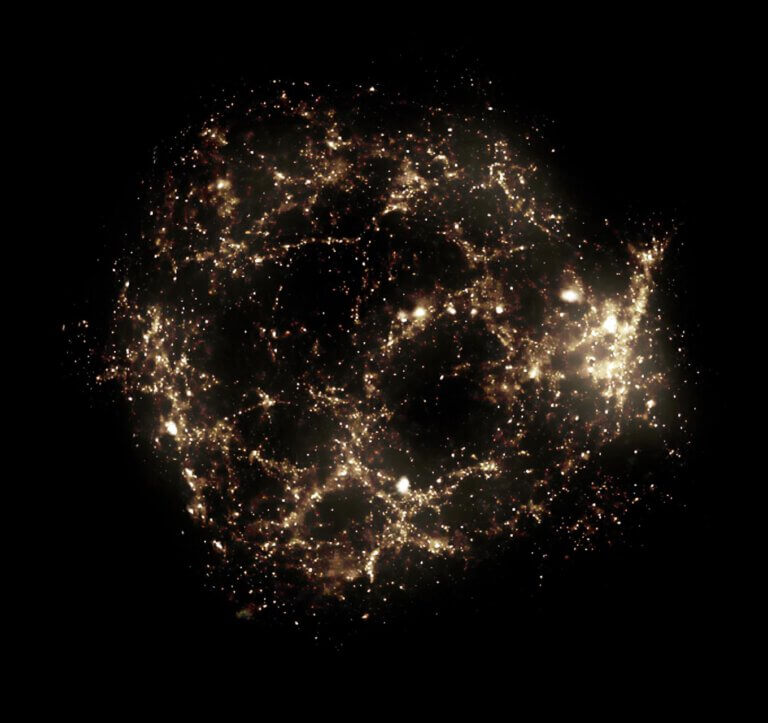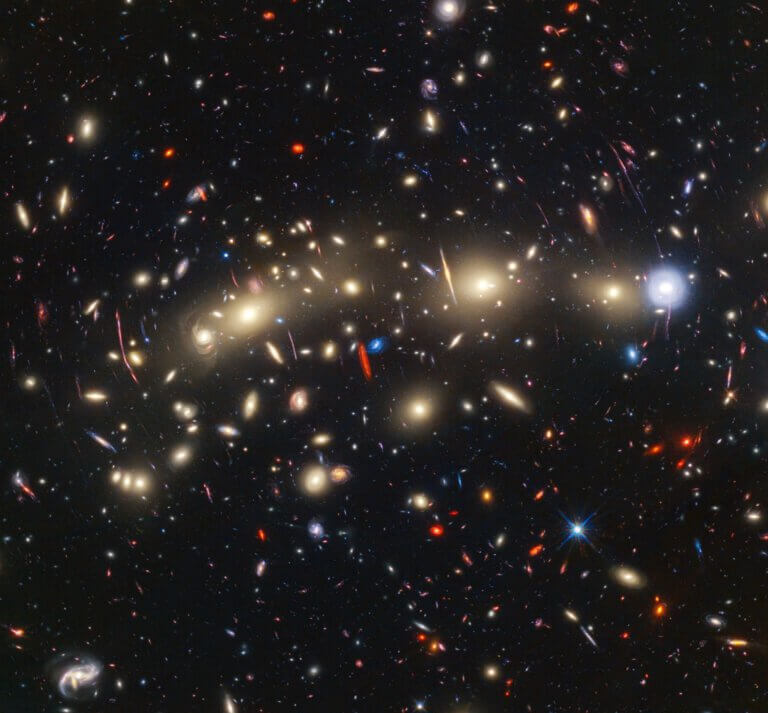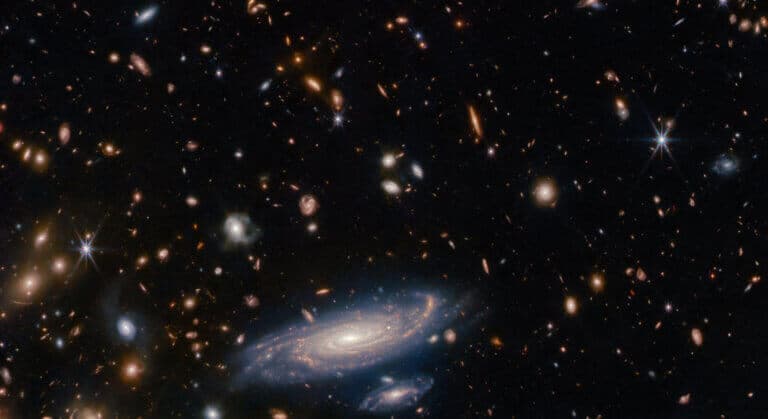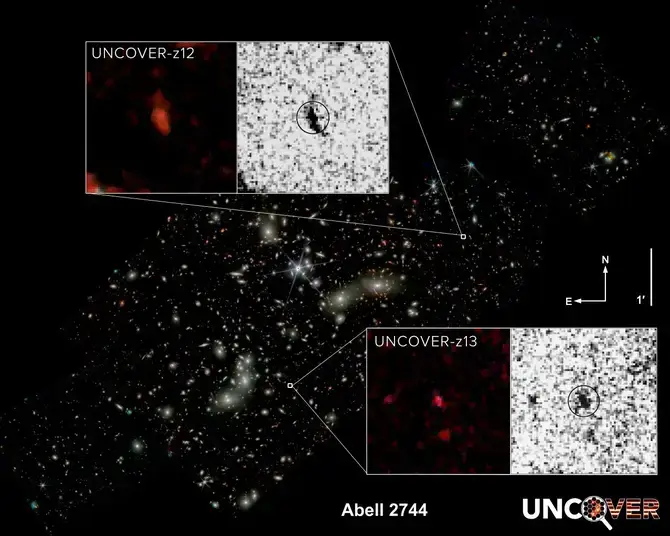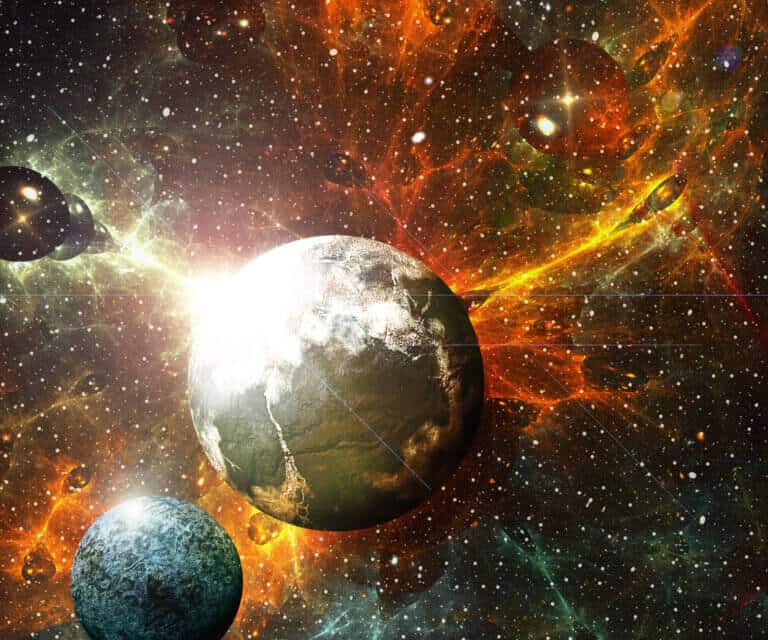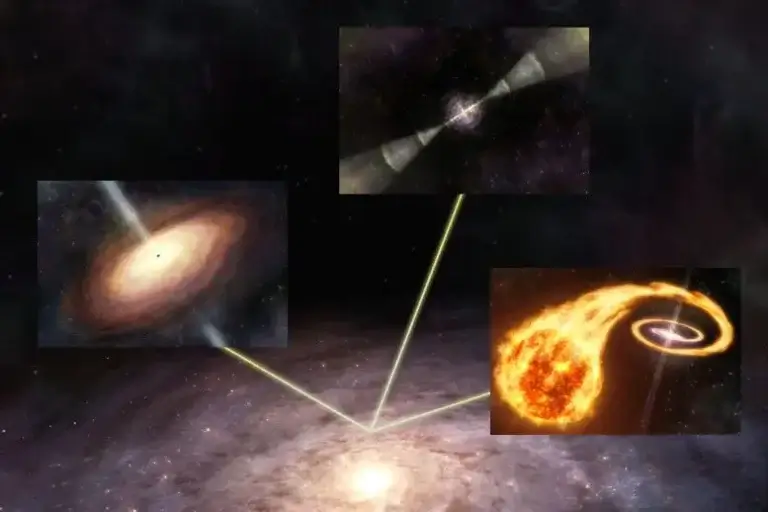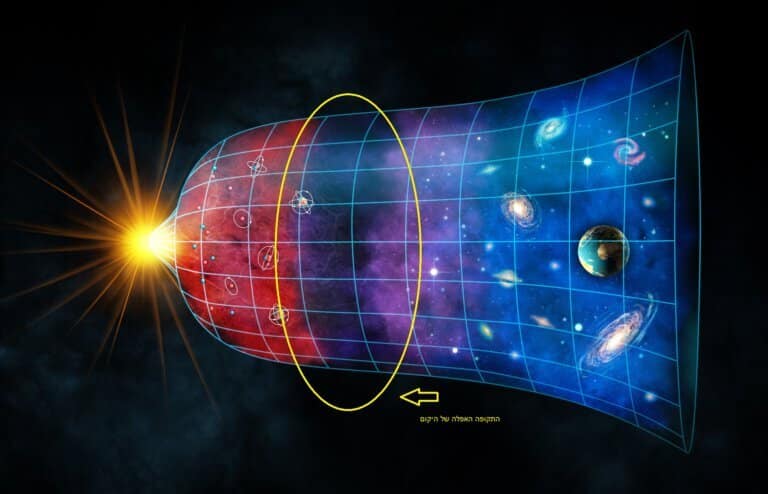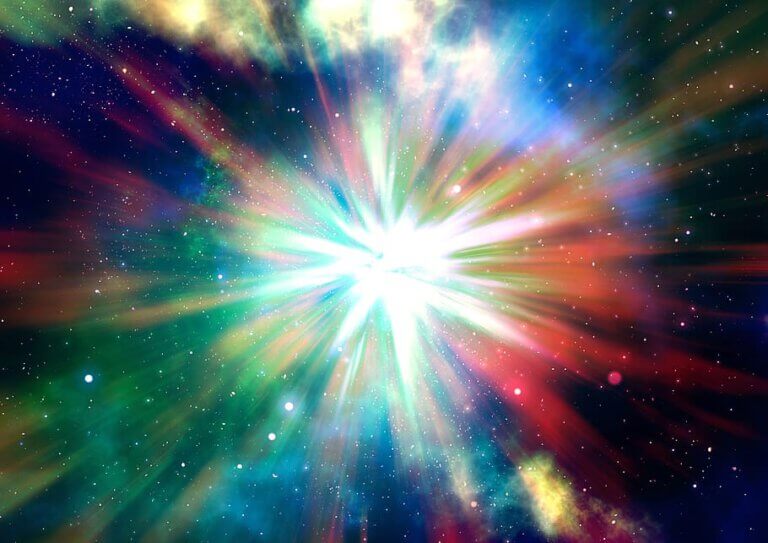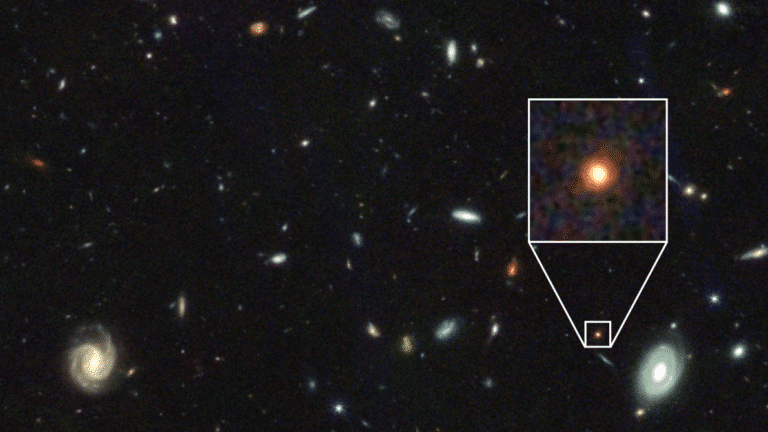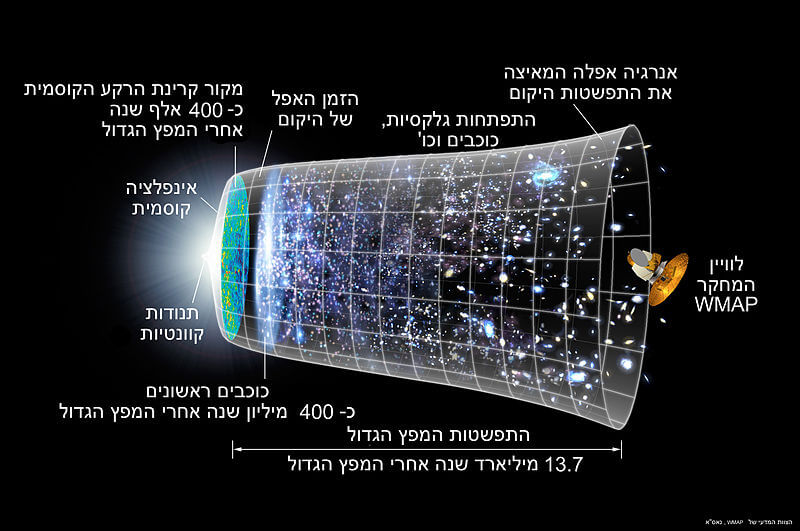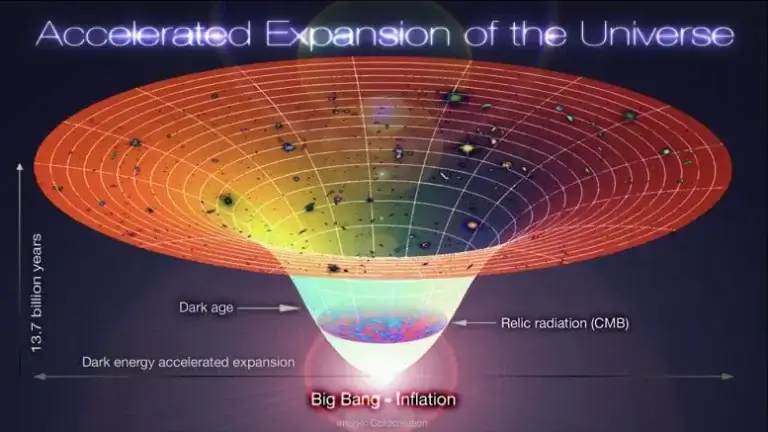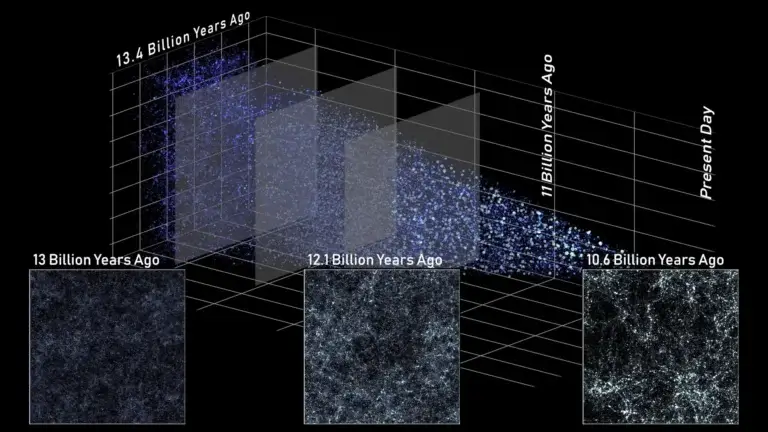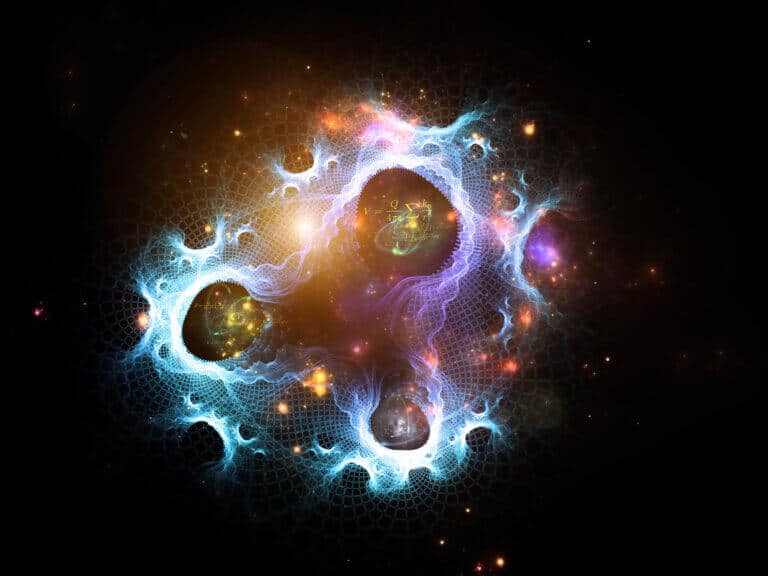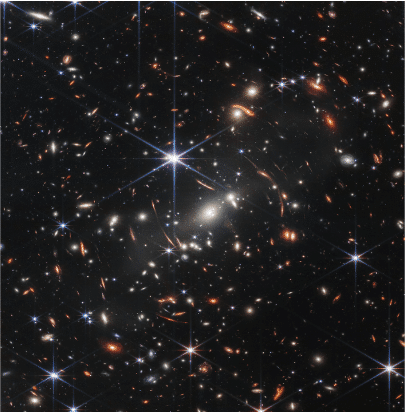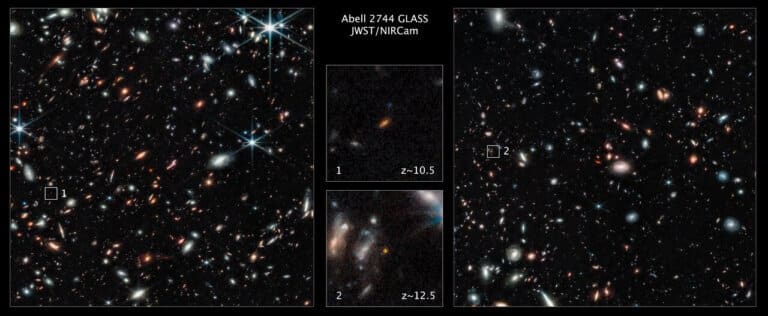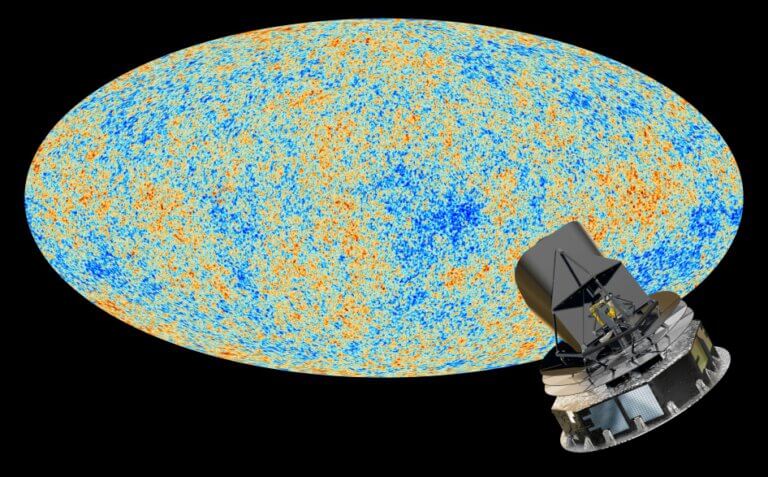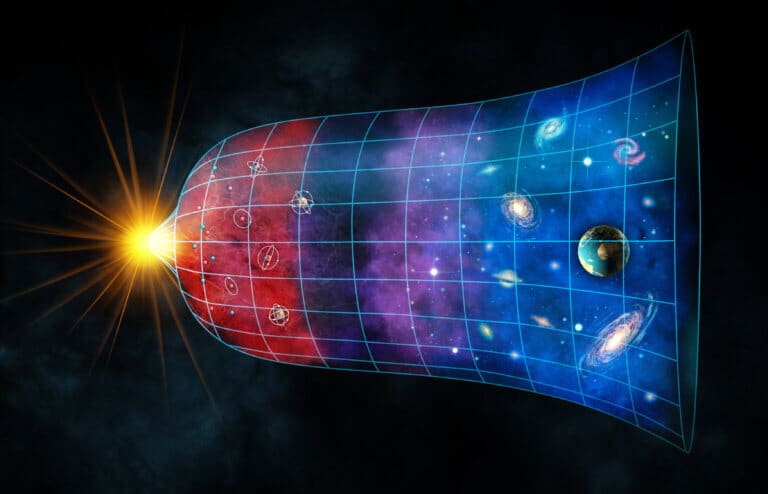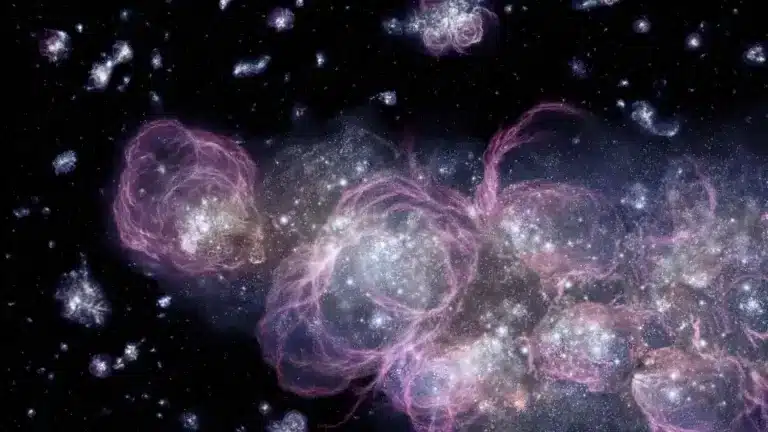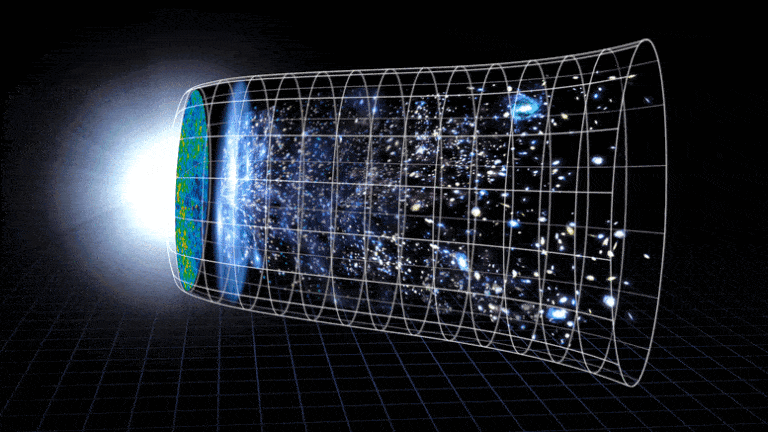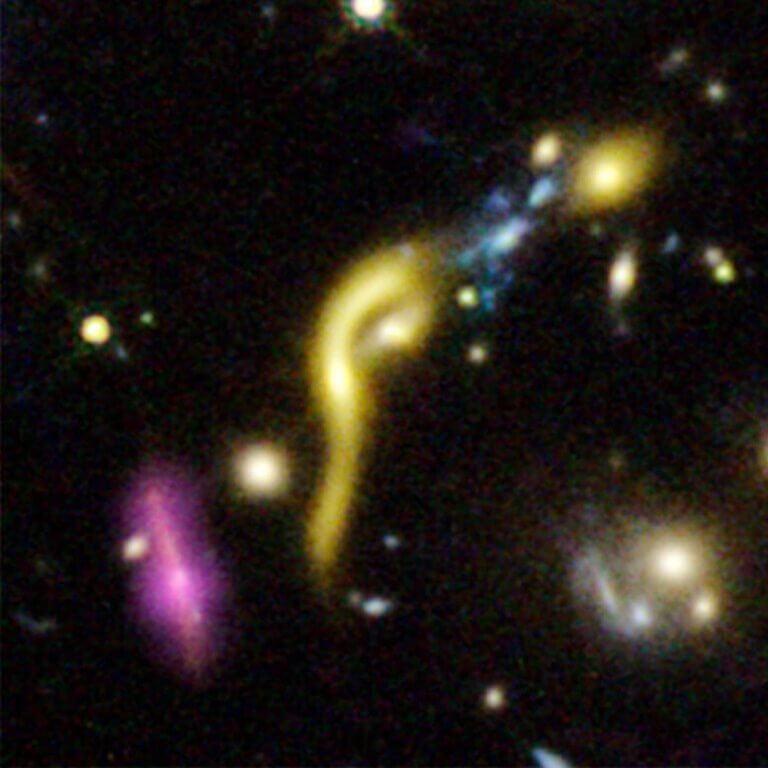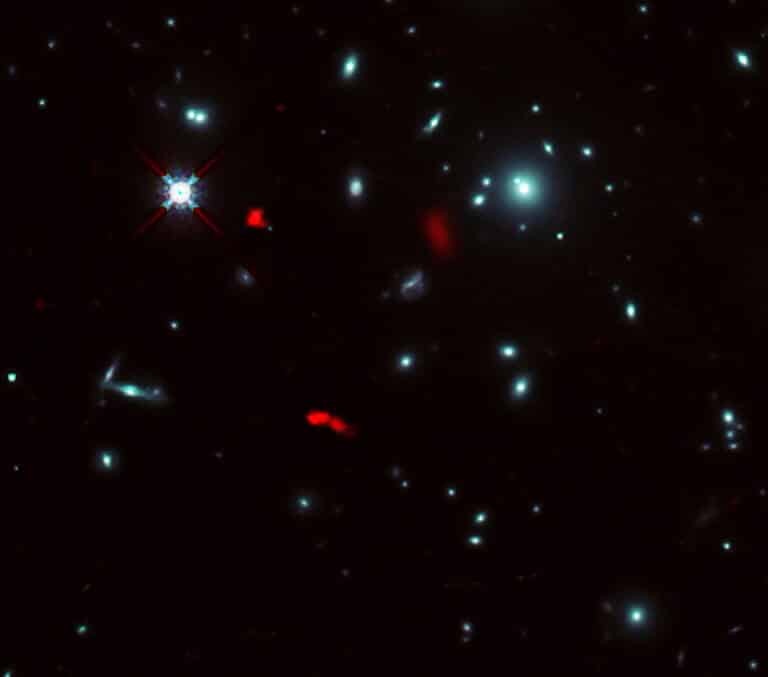Hayadan > Space and astronomy > Astrophysics > The beginning of the universe
The beginning of the universe
- Davidson Institute
- April 27, 2024
- 9 תגובות
James Webb Space Telescope observations of galaxies in the young universe revealed that the first light in space came from bright young stars
- Avi Blizovsky
- March 25, 2024
- 3 תגובות
A research partnership between theoretical physicists and computational physicists at the University of Virginia that may offer new insight into the possibility of a theory of everything or, at the very least, a better understanding of gravity, one of the fundamental forces of the universe
- Avi Blizovsky
- March 13, 2024
- No comments
This galaxy experienced a tumultuous and fast life: the star formation process worked quickly and suddenly ended, a situation that is not expected at such an early stage in the evolution of the universe. It is still unclear whether the "frozen" state of the galaxy is temporary or permanent, and what is the reason for the cessation of the star formation process
- Avi Blizovsky
- January 23, 2024
- 4 תגובות
The first galaxies were much less developed than the spiral and spherical galaxies that exist today, which are actually the result of mergers, both because of the stage of development but also because of the conditions that prevailed at the time
- Avi Blizovsky
- December 23, 2023
- 4 תגובות
The "mourning tension" in cosmology has recently raised questions about the standard cosmological model
- Avi Blizovsky
- December 5, 2023
- 6 תגובות
The stunning image represents one of the most comprehensive views of the universe ever taken, revealing a rich landscape of galaxies along with more than a dozen variable objects discovered for the first time
- Avi Blizovsky
- December 1, 2023
- 10 תגובות
- Avi Blizovsky
- November 20, 2023
- 36 תגובות
Unlike other distant galaxies that have been discovered, which appear as small red dots, the two new galaxies are large and have an unusual appearance - one resembling a peanut and the other a fluffy ball, indicating the diversity of galaxies in the early universe. According to the speed and direction of their distance, today they are beyond our line of sight
- Avi Blizovsky
- November 12, 2023
- 6 תגובות
Researchers from the Australian National University have developed a model that is the most comprehensive view of the history of the universe. The study highlights the change that the universe underwent from the moment of its formation 13.8 billion years ago to its current state, full of objects such as protons, atoms and galaxies
- Avi Blizovsky
- October 26, 2023
- 20 תגובות
New research has improved the accuracy of the parameters that control the expansion of the universe. More precise parameters will help astronomers determine how the universe grew to its current state, and how it will evolve in the future.
- Tel Aviv University
- September 28, 2023
About 50 million years after the big bang, we will be able to measure the evolution of the universe and its composition by measuring radio waves from the moon
- Noam Chai
- September 15, 2023
- 25 תגובות
A special article in honor of Hebrew new year summarizing the creation of the world through the lens of science
- Avi Blizovsky
- June 11, 2023
- 7 תגובות
The galaxy is currently 25 billion light-years away, but when light began to travel from it to us about 12.5 billion years ago, it was much closer, because the universe is expanding
- Prof. Asher Yahlom
- June 9, 2023
- 6 תגובות
- Avi Blizovsky
- June 4, 2023
- 19 תגובות
The first findings from the James Webb space telescope hinted at galaxies so early and massive that they are somewhat inconsistent with our understanding of the formation of structure in the universe. A new study tries to deal with these contradictions
- Avi Blizovsky
- March 10, 2023
- 3 תגובות
- Avi Blizovsky
- February 11, 2023
- 55 תגובות
A team of scientists made a drastic announcement about one of the most accurate measurements to date of the distribution of matter in the universe using, among other things, the radio telescope at the South Pole
- Tel Aviv University
- December 2, 2022
According to the groundbreaking findings, the first galaxies were small and dim. They were dimmer than galaxies today, converting only less than 5% of their gas into stars. Also, the first galaxies did not emit much higher intensity radio radiation than we see today
- Avi Blizovsky
- November 18, 2022
- 9 תגובות
One of these galaxies is observed as it appeared about 300 million years after the Big Bang and shines much brighter than expected. This figure now makes researchers estimate that the first galaxies were formed 100 million years after the Big Bang. "It's like an archaeological dig, when you suddenly find a lost city or something you didn't know about," said one of the researchers
- Science site The Conversation
- November 13, 2022
- 7 תגובות
Researchers who have examined whether Einstein's theory of gravity works on the largest possible scale claim that there are deviations that need to be checked and corrected similar to those at small distances that can be answered using quantum theory
- Avi Blizovsky
- August 17, 2022
- 36 תגובות
New COMAP radio survey will peer beneath the 'tip of the iceberg' of galaxies to reveal a hidden era of star formation
- Avi Blizovsky
- May 9, 2022
- 21 תגובות
In a new paper published in PNAS, three scientists attempt to model the nature of dark energy, a mysterious entity that appears to be causing the universe to expand faster and faster, consistent with previous observations of the universe's expansion.
- Avi Blizovsky
- December 19, 2021
- 3 תגובות
Cosmological calculations almost always assume that there is a uniform distribution of matter in the universe. This is because the calculations would be too complicated if they included the location of each and every star. In reality the universe is not uniform: there are places with stars and planets, and in other places there is only empty space.
- Avi Blizovsky
- September 28, 2021
- 4 תגובות
When the universe was about three billion years old, only 20% of its current age, it went through the most abundant period of star birth in its history. But when Hubble and ALMA looked at cosmic objects during this period, they found something strange: six ancient massive "dead" galaxies that had run out of the cold hydrogen gas needed to form stars
- Ben-Gurion University
- May 4, 2021
- No comments

